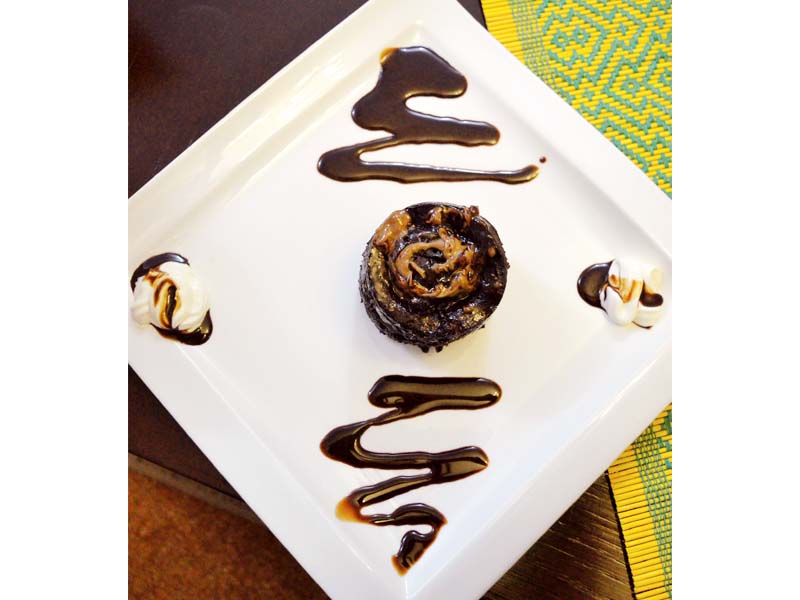

• Combine together all the dry ingredients in a medium-sized bowl.
• Gradually stir in the milk, making sure there are no clumps in the batter.
• Add the chocolate chips and syrup and mix some more.
• Pour the batter into a microwaveable mug, adding one tablespoon of chocolate spread in the centre.
• Microwave the mug for 70 to 75 seconds, until the batter has cooked through.
• Demold the cake from the mug or enjoy it straight from there.
The seven cardinal rules of baking in a mug
Don’t get swayed by how easy mug cakes appear — they can be surprisingly tricky! But to help you out, we have shortlisted the following baking tips that will surely come in handy, especially for the newbie bakers. Read on and be on your way to cake success!
Microwave safety is a must
So, first things first. Safety is very important, especially when it comes to cooking. You must ensure that the utensils you are using are 100% microwave safe. Any kind of glass, jar or even paper cup will suffice, so long as it has got the safety sign on it.
Stick to self-rising flour
If there is one thing all celebrity chefs swear by, it is self-rising flour. The ingredient has been proven to produce better and more consistent mug cakes. If you wish to conjure your own flour up, simply mix one cup of all-purpose flour with a pinch of salt and 3/4 teaspoon of baking powder and you are good to go.
A glass half full
The golden rule of baking in mugs is to never — ever — fill them more than halfway up. Over-filling will lead to over-flowing and a great big mess in your microwave.
Check it out
Keep a regular tab on the progress of your cake by carefully touching the top again and again. It should feel firm and springy — not raw and doughy. Keep cooking for another 15 seconds, every time the cake comes out undone.
Don’t mind the colour
Most normal cakes acquire a golden-brown shade on the top once they are cooked. This is due to the caramelisation of the sugar present in the batter, which occurs at around 160 degrees Celsius. Unfortunately, a regular microwave does not heat further than a 100 degrees Celsius, which means the cake wont brown. It will remain a, golden/tan colour.
Be prepared for some sinking
At times, the cake deflates a little and doesn’t come out looking as nice as you would have liked. But don’t worry because it still tastes great. You can give it a generous layer of icing to conceal the structural flaws.
SOURCE: WWW.BUZZFEED.COM
Published in The Express Tribune, Ms T, November 1st, 2015.

















COMMENTS
Comments are moderated and generally will be posted if they are on-topic and not abusive.
For more information, please see our Comments FAQ